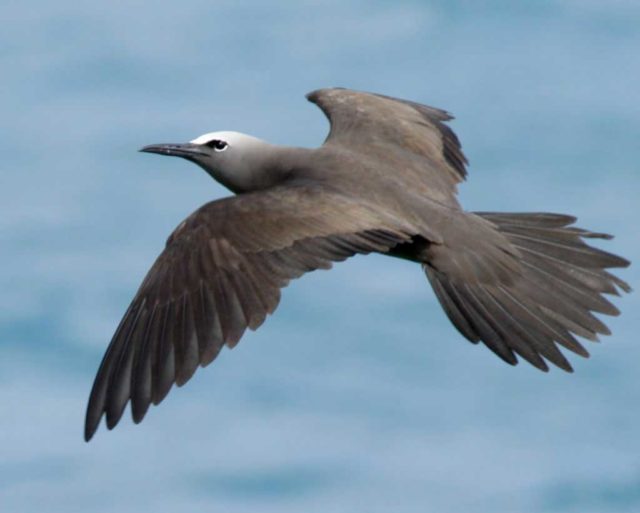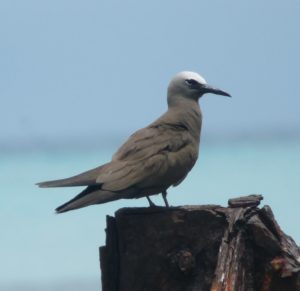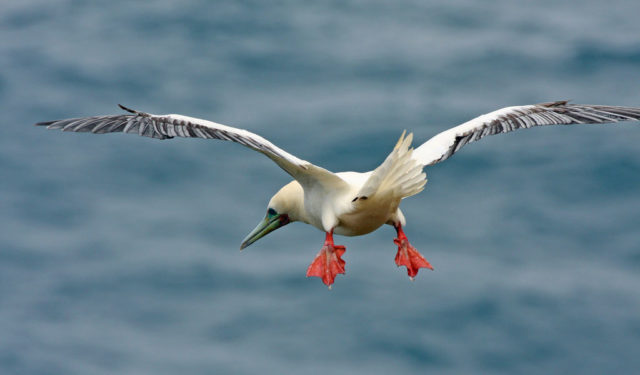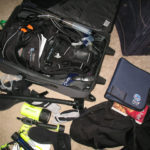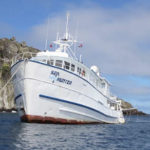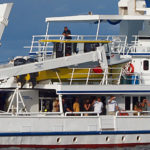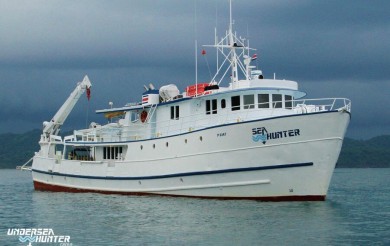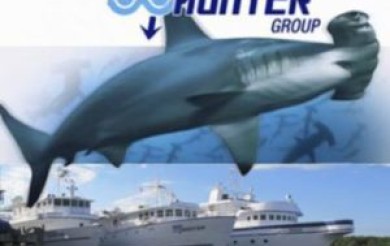Seabirds: Aerial Hunters of Cocos Island
While most birds prefer to stay in altitude environments in the middle of a tree canopy, seabirds are more at home in the edges of a hanging cliff that has a direct view of the sea. The limestone ledges of Cocos island is a perfect place for seabirds to colonize. In fact, when you arrive and anchor at one of the anchorage sites, you will see that the cliffs are thriving with seabirds. And not just a single species of seabirds, several variety can be found around Cocos island were their population is deemed to be healthy.
At first glance on the cliffs, it will give you the impression that there are many types of seabirds living closely to each other. But taking a closer look will tell you that it is just a juvenile and an adult of a single species thriving together in its colony. You have to take note that their young looks different from their adult counterparts. Aside from the difference in body size, juvenile seabirds has a different feather color. The trend is that if the adult is dark-colored, then its juvenile is white-colored. As it grows old, it’s feather is constantly changed until it reaches sexual maturity. On the other hand, if the adult is white colored, then its juvenile will be dark-colored, usually on the brown spectrum.
Their Presence at Sea indicates Fish
It is logical to think that if there is a seabird out at sea, then most probably there is fish underwater that is being chased by this aerial predator. Most of the prey these seabirds are hunting are small-sized fish like sardines. In Cocos island, this is best exhibited during the arrival of the large school of sardines where predators of all sorts like sharks, tunas and seabirds joins in this shallow water feast.
This shallow water feast is called the baitball. While underwater predators are busy compressing the formation of migratory sardines, seabirds are also preparing high in the sky their strategy in claiming their share of the pie.
Once the feast has commenced, seabirds will dive underwater with their wings tucked in. Each seabird can take in as much fish as they can. This is possible courtesy of their highly developed throat that has a skin extension that can be expanded to temporarily store fish which they can bring back to their nest to feed their young.
Species of Seabirds in Cocos Island
Brown Noody (Anous stolidus)
Maximum Length: 45 centimeters
Maximum Weight: 167 grams
Frequency: Abundant, found in most Pacific Islands
A brown noody is a seabird that can be found in almost all tropical habitats. They prefer to thrive in elevated structures such as rocky cliffs and tree canopy.
In Cocos island, they abound in colonies along the limestone ledges of the rainforest with some branching trees that provides them with a natural shade. Considered as the largest of the Noody family of birds, brown noody has a distinct pairing where females only lay a single egg per breeding season.
You can easily differentiate them from a black noody through its large size and huge plumage with a dark brown color. They also have this white undertone on its head which has become an easy identifying mark. Ironically, despite being a successful avian species thriving in the island for thousands of years, their name was derived from the word “stolidus” which means stupid.
Video courtesy from Zacariah Klim
Great Frigatebird (Fregata minor)
Maximum Length: 100 centimeters
Maximum Weight: 1,900 grams0
Frequency: Abundant, found in most Pacific Islands
Great frigatebirds are large seabirds that can grow up to a meter in wingspan. They have a long beak that is hooked at the end making them highly efficient in hunting their favorite meal. When they need to feed, they take off from the refuge of their high-altitude ecosystem and soar high above the water with wings fully expanded while searching for the easiest fish to catch which is mostly located near the surface water.
Once they have spotted their meal, they will make a sudden decent by retracting in their wings and make a pointed entry in to the water easily catching their target. But what is very interesting about great frigatebirds is their extended throat skin that is colored red called the Gular Sac. This sac has several function that is unique only to frigatebirds. For example, during mating season, male frigatebirds take in air allowing the gular sac to expand which is their own way of attracting a partner. When its time to feed, the gular sac can be a storage for excess fish that can be brought back to their nest to feed their young through regurgitation.
Video courtesy from Glenn LeMay
Red Footed Booby (Sula sula)
Maximum Length: 77 centimeters
Maximum Weight: 1,500 grams
Frequency: Abundant, found in most Pacific Islands
As their name suggest, their foot are colored red that is webbed that can act like a paddle. But what is interesting about their foot is not the color, but rather, has something to do with an anatomical extension.
Each foot is equipped with 3 very sharp claws. But these claws are not used in getting food like what eagles does by grabbing its prey. Instead, these claws become very important when in taking off and landing.
When you hike high up in the mountains of Cocos island, you will have a glimpse of their colony. Taking a closer look allows you to see them in how they take off and land from an aerial survey. The first impression that you will get is that they are powerful and agile fliers. But when they go back and land, you can easily say that they are clumsy. They are not really clumsy but their clumsiness in landing has something to do with their feet. Since their foot is webbed and wet, they easily slide off when landing. But with the aide of their 3-clawed foot, they can easily gain traction and balance where accidental slipping is significantly reduced.
Video courtesy from BelizeBirds
Reference
Wikipedia: www.wikipedia.org
Sealife Base: www.sealifebase.org
Marine Ornithology: www.marineornithology.org
Cocos Island Liveaboard Trips for 2019
Due to high demand of liveaboard trips to Cocos island, as early as this year, we are publishing the 2019 trips for you to choose your preferred schedule and prepare for the ultimate diving adventure of your life. Reserve your seat to Cocos Island as they are selling like hotcakes. Schedule of Liveaboard Trip to […]



